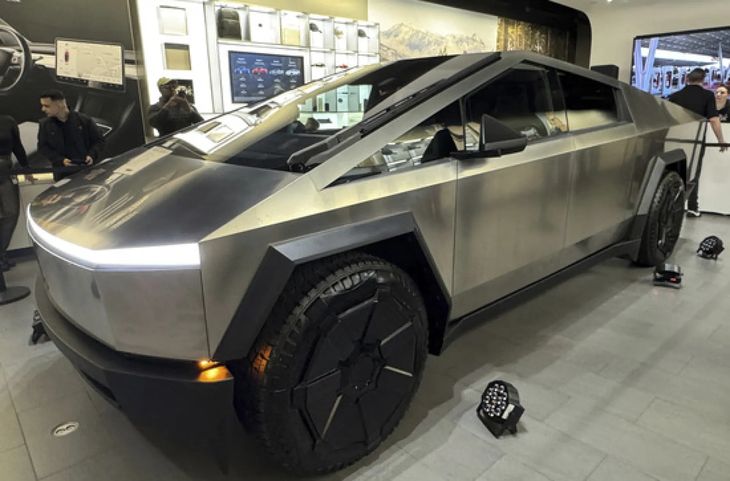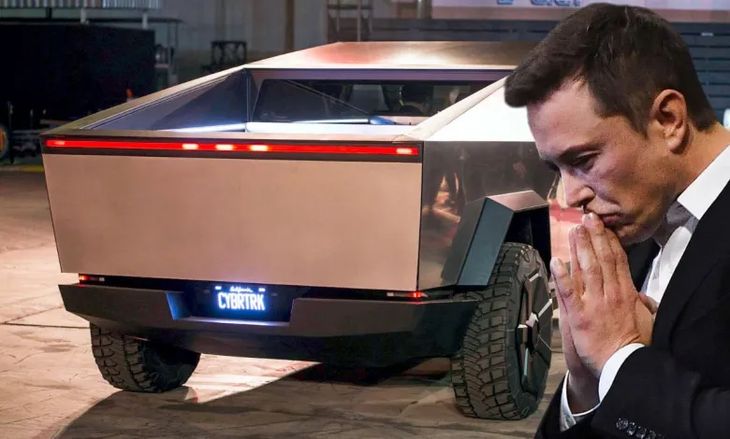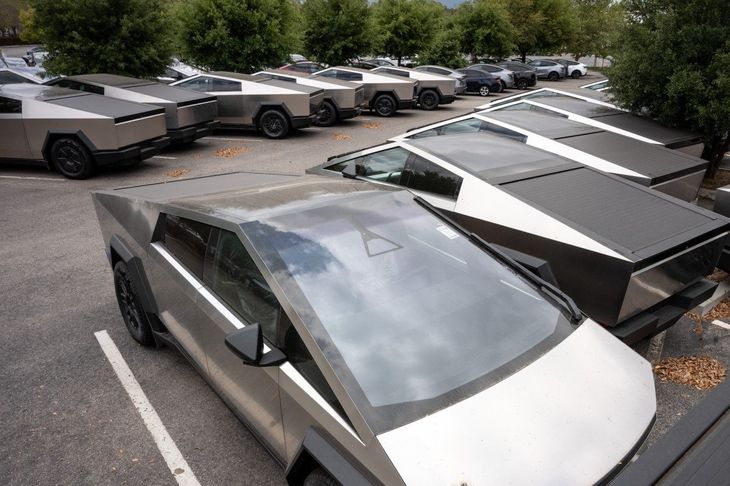I was cruising down I-95 last month, sipping bad gas station coffee, when I spotted a Tesla Cybertruck gleaming like a misplaced spaceship in the pickup lane. For a moment, I was jealous—those angular lines, that stainless-steel swagger.
But then I remembered the headlines: sales tanking, owners fuming, and resale values dropping faster than my old Civic’s clutch. The Cybertruck, Tesla’s big bet on redefining trucks, has gone from a million preorders to a financial quagmire.
Sales plummeted over 50% from 12,900 units in Q4 2024 to just 6,406 in Q1 2025, and buyers are paying the price-literally.
From jaw-dropping depreciation to hidden costs, this article breaks down why the Cybertruck’s financial pitfalls make it a risky buy. Buckle up, because this ride’s gonna hurt your wallet.
Overview of Tesla Cybertruck’s Financial Challenges

The Cybertruck was supposed to be Tesla’s middle finger to boring pickups, but it’s become a cautionary tale of hype outrunning reality. With a $100,000 price tag for the AWD Foundation Series and a resale value that’s taken a bigger hit than a demolition derby loser, owners are stuck holding the bag.
Over 10,000 unsold trucks are gathering dust, worth $808 million, while Tesla slashes production and staff at its Texas Gigafactory. Let’s dive into the financial mess that’s got buyers rethinking their Cybertruck dreams.
Understanding the Financial Pitfalls and Depreciation Risks
Owning a Cybertruck is like buying a shiny new yacht only to find it’s got a hole in the hull. The financial risks are real, and they hit hard.
From resale values cratering to Tesla’s questionable business moves, here’s why the Cybertruck’s money troubles are more than just a speed bump.
Unprecedented Depreciation: A $34,600 Kick in the Teeth
Imagine dropping $100,000 on a Cybertruck, only to watch it lose 34.6% of its value in a year. That’s $34,600 gone-poof! faster than you can say “stainless steel.” Most luxury vehicles shed 15–20% annually, but the Cybertruck’s depreciation is a bloodbath.
Compare that to the Ford F-150 Lightning, which holds its value like a trusty toolbox. I chatted with a buddy, Mike, who bought a Cybertruck last year.
He tried selling it and got offered $60,000. “I felt like I’d been robbed,” he groaned, nursing a beer. The numbers don’t lie: Tesla’s truck is a financial sinkhole for early adopters.
Inventory Backlog and Overproduction: Too Many Trucks, Too Few Buyers
Tesla thought they’d sell 250,000 Cybertrucks a year. Instead, they’ve got 10,000 unsold units clogging lots, worth $808 million. That’s like a car lot hosting a clearance sale nobody showed up for.
The company’s slashed production, moved workers to Model Y lines, and cut Texas Gigafactory staff by half. Those 2024 models sitting unsold? They’re depreciating faster than a knockoff Rolex. It’s a classic case of Tesla betting big and losing bigger, leaving buyers with trucks nobody wants.
Tesla’s Trade-In Policies: Thanks for Nothing, Elon
Until recently, Tesla wouldn’t even touch Cybertruck trade-ins. Owners like Mike were stuck, unable to offload their depreciating beasts. Now, Tesla’s opened trade-ins, but the process is murkier than a swamp.
Offers are low, terms are vague, and owners feel screwed. One Reddit user posted, “Tried trading my Cybertruck. Tesla offered me less than a used Model 3. What a joke.” This isn’t just bad service. it’s a financial trap that locks owners into a losing investment.
High Purchase Costs vs. Diminishing Returns
The Cybertruck’s $100,000 Foundation Series promised bulletproof glass and sci-fi vibes, but it’s like paying Ferrari money for a fidget spinner. Towing? Meh. Cargo storage? Good luck.
The stripped-down RWD version launched in 2025 was Tesla’s attempt to fix the price problem, but it’s too little, too late. Meanwhile, the Rivian R1T offers similar EV muscle for less cash and better practicality.
Spending six figures on a truck that can’t do truck things is like buying a racecar with no wheels.
Hidden Costs Beyond Depreciation

Depreciation’s just the start. The Cybertruck’s hidden costs sneak up like a parking ticket on a holiday. From sky-high repair bills to insurance rates that’ll make you cry, owning this truck is a financial rollercoaster-and not the fun kind.
Safety Recalls and Repair Expenses
Eight recalls since launch. Eight! We’re talking doors that could chop fingers, accelerators that go rogue, and trim pieces flying off like they’re auditioning for Fast & Furious. The NHTSA is sniffing around, and owners are stuck with repair bills that sting.
A Cybertruck owner on X complained about a $2,000 fix for a faulty door sensor. “I could’ve bought a used Honda for that,” he quipped. These recalls aren’t just inconvenient-they’re a cash drain that hits owners where it hurts.
Insurance Premiums: Pay Up for the Privilege of Risk
Insuring a Cybertruck is like insuring a monster truck driven by a teenager. Its experimental design and safety woes make insurers nervous, jacking up premiums. A Jalopnik reader shared their quote: $1,800 a year, double their old F-150. Why?
The truck’s a liability magnet, from Autopilot crashes to that January 2025 explosion. If you’re thinking of buying, get an insurance quote first-your wallet will thank you.
Social Stigma and Resale Challenges
The Cybertruck’s not just a truck; it’s a political statement. Thanks to Elon Musk’s Trump ties, owners report vandalism and dirty looks. Hashtags like #cybertruckflop and #teslaboycott are trending for a reason.
Mike told me, “I parked at the mall, came back to a keyed door and a note saying ‘Musk fanboy.’ It’s a truck, not a manifesto!” This social baggage makes reselling a nightmare, as buyers shy away from the controversy. Your $100,000 truck might as well have a “kick me” sign.
Lessons from the Cybertruck’s Market Struggles
The Cybertruck’s flop isn’t just Tesla’s problem-it’s a masterclass in what not to do as a car buyer. Let’s break down the lessons, so you don’t end up like Mike, drowning in regret and bad trade-in offers.
Comparing Financial Risks with Competitors
The Ford F-150 Lightning and Rivian R1T are kicking the Cybertruck’s butt in value retention. The Lightning depreciates at a sane 18% a year, and the R1T’s practical design keeps buyers happy.
Both handle truck duties-towing, hauling-without the Cybertruck’s drama. I test-drove a Rivian last summer; it felt like a truck, not a science project. If you want an EV truck, these are safer bets than Tesla’s sinking star.
The Perils of Early Adoption
Buying a first-gen EV is like volunteering for a beta test with your life savings. The Cybertruck’s recalls and depreciation scream “wait for version 2.0.”
I learned this the hard way with an early Leaf-cute car, terrible range. Save your cash and let Tesla work out the bugs, or go for a proven model like the F-150 Lightning.
Strategies to Mitigate Financial Risks
Still want a Cybertruck? Lease, don’t buy-let someone else eat the depreciation. Shop insurance quotes early; don’t get blindsided by premiums.
And keep an eye on Tesla’s recall fixes-free repairs are better than DIY disasters. If you’re set on owning, wait a year. Prices are dropping, and the bugs might be squashed by then.
Conclusion

The Tesla Cybertruck’s sales nosedive-from 12,900 units in Q4 2024 to 6,406 in Q1 2025-is a neon warning sign for buyers. With 34.6% depreciation, costly repairs, and social stigma turning owners into pariahs, this truck is a financial landmine.
As a Jalopnik blogger who’s seen countless car fads crash and burn, I’ll say it: the Cybertruck’s cool, but it’s not worth the pain. Skip it for a Rivian R1T or Ford F-150 Lightning, or wait until Tesla gets its act together.
As my old man used to say, “Don’t buy a car that’s more trouble than a two-dollar mule.” Save your money and your sanity-steer clear of the Cybertruck for now.
